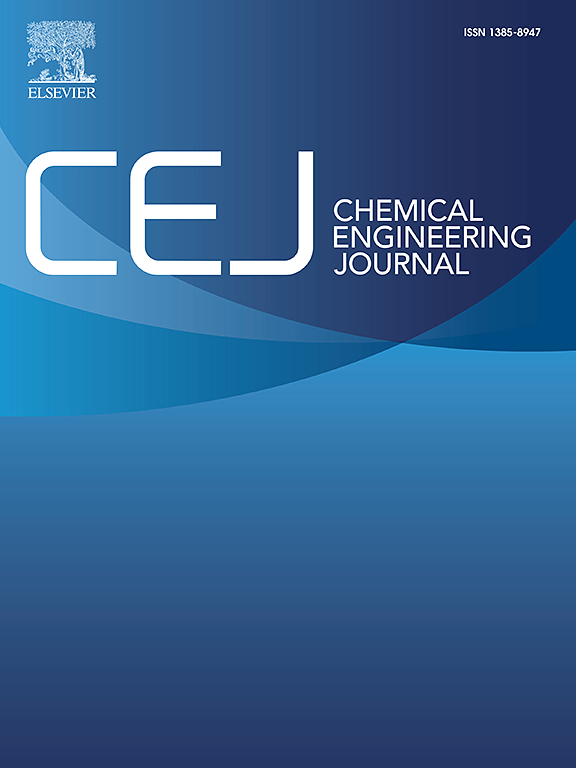Enhanced photocatalytic degradation of organic pollutants in water by g-C3N4/N-TiO2/Y1.97SiO5:Ce0.03 heterostructure
IF 13.2
1区 工程技术
Q1 ENGINEERING, CHEMICAL
引用次数: 0
Abstract
A novel ternary heterostructure based on g-C3N4/N-TiO2/Y1.97SiO5:Ce0.03 was synthesized via thermal treatment and evaluated for the photocatalytic degradation of two antibiotic pollutants, chloramphenicol (CAP) and vancomycin (VAN), in aqueous solution. The composite was designed to function as a photoactive platform, in which Ce3+-doped Y₂SiO₅ acts as an internal light converter, emitting at ~430 nm upon UV excitation (365 nm) to enhance activation of the g-C3N4/N-TiO2 interface. Structural and morphological characterizations (WAXD, FTIR, XPS, TEM) confirmed the formation of a well-integrated heterostructure with strong interfacial interactions. The photocatalyst achieved near-complete removal of CAP (99.7 %) and VAN (100 %) under UV light, and also showed high efficiency under simulated solar irradiation and in real water matrices. These results demonstrate the synergistic light-conversion and charge-transfer properties of the composite, underscoring its potential as a sustainable and scalable solution for antibiotic pollutant removal in water treatment applications.

g-C3N4/N-TiO2/Y1.97SiO5:Ce0.03异质结构增强光催化降解水中有机污染物
通过热处理合成了一种新型的g-C3N4/N-TiO2/Y1.97SiO5:Ce0.03三元异质结构,并对其在水溶液中光催化降解氯霉素(CAP)和万古霉素(VAN)两种抗生素污染物进行了评价。该复合材料被设计为光活性平台,其中Ce3+掺杂的Y₂SiO₅充当内部光转换器,在紫外线激发(365 nm)下发射~430 nm,以增强g-C3N4/N-TiO2界面的活化。结构和形态表征(WAXD, FTIR, XPS, TEM)证实形成了一个具有强界面相互作用的完整异质结构。该光催化剂在紫外光下对CAP(99.7 %)和VAN(100 %)的去除率接近完全,在模拟太阳照射和真实水基质下也表现出较高的去除率。这些结果证明了复合材料的协同光转换和电荷转移特性,强调了其作为水处理应用中抗生素污染物去除的可持续和可扩展解决方案的潜力。
本文章由计算机程序翻译,如有差异,请以英文原文为准。
求助全文
约1分钟内获得全文
求助全文
来源期刊

Chemical Engineering Journal
工程技术-工程:化工
CiteScore
21.70
自引率
9.30%
发文量
6781
审稿时长
2.4 months
期刊介绍:
The Chemical Engineering Journal is an international research journal that invites contributions of original and novel fundamental research. It aims to provide an international platform for presenting original fundamental research, interpretative reviews, and discussions on new developments in chemical engineering. The journal welcomes papers that describe novel theory and its practical application, as well as those that demonstrate the transfer of techniques from other disciplines. It also welcomes reports on carefully conducted experimental work that is soundly interpreted. The main focus of the journal is on original and rigorous research results that have broad significance. The Catalysis section within the Chemical Engineering Journal focuses specifically on Experimental and Theoretical studies in the fields of heterogeneous catalysis, molecular catalysis, and biocatalysis. These studies have industrial impact on various sectors such as chemicals, energy, materials, foods, healthcare, and environmental protection.
 求助内容:
求助内容: 应助结果提醒方式:
应助结果提醒方式:


